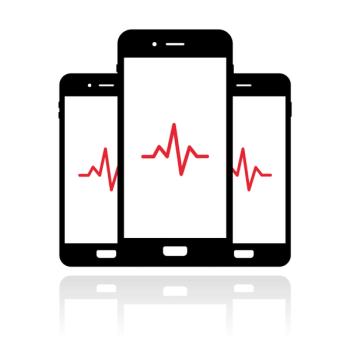
Telehealth is the future- and the future has arrived
Since the public health emergency that is COVID-19 came to America in January, the Centers for Medicare & Medicaid Services (CMS) has unleashed a series of changes intended to allow the codes and coverage to catch up with the newly imposed reality of telehealth.
For several years, we’ve seen Medicare and the American Medical Association’s Current Procedural Terminology (CPT) manual slowly approach the age of telehealth. Despite a lot of discussion and many headlines during each of the past few years, the codes and coverage embracing the modern age of medicine have lagged far behind the technology.
This isn’t limited to telehealth, or even to coding and payments. The degree of penetration and utilization of the electronic health record in the last decade has left many of the regulations intended to deal with the business of medicine in the dust. Rules written to govern the paper chart don’t really jibe with reality anymore. The old consult language of ‘communicated by written report’ hasn’t changed since those notes were typed on a typewriter and envelopes addressed by hand.
The federal documentation guidelines, a standard for the past 25 years and a physician’s daily confinement of compliance, are the latest to show up in the rear-view mirror.
Fast-forward to the future in a matter of weeks, at least temporarily. Since the public health emergency that is COVID-19 came to America in January, the Centers for Medicare & Medicaid Services (CMS) has unleashed a series of changes intended to allow the codes and coverage to catch up with the newly imposed reality of telehealth.
Although specific e-service and telehealth-type codes were in their infancy, both the CPT and CMS systems are equipped to allow for telehealth services and claims to be clearly identified, coded and billed. CPT had introduced the star symbol next to certain codes that were eligible for telehealth. Modifier 95 has been around for some time and identifies services performed via synchronous telemedicine with real-time audio and video communication.
The place of service (POS) codes, as CMS now uses them since March 31, allow the agency to determine whether or not the service rendered was a traditional remote originating site (POS 2) or the new temporary version using office, hospital or other POS codes (11, 22, etc.).
Until March, the single largest obstacle to widespread adoption of telehealth for office services was the geographic limitation imposed by Medicare’s originating site requirement - that the originating site be outside of a major metropolitan area. That was the elephant in the road, effectively blocking the use of the codes for any urban and many suburban areas, regardless of the practicality.
COVID-19 moved the elephant, at least for now. Welcome to the future.
Since late March, CMS has taken extraordinary steps to allow providers to do what needs to be done, and to pay them for it. Among those steps:
As of March 6, Medicare will pay for office, hospital and other visits furnished via telehealth, including those in a patient’s place of residence, across the country. A range of providers, such as doctors, nurse practitioners, clinical psychologists and licensed clinical social workers, are able to offer telehealth services to their patients. Additionally, the Department of Health and Human Services Office of Inspector General is providing flexibility for health care providers to reduce or waive cost sharing for telehealth visits paid by federal health care programs.
Medicare, after some back and forth, has settled on paying physicians the standard (POS) office rate for services provided via telehealth and not applying the site-of-service differential associated with hospital clinic-type encounters.
HIPAA and privacy standards have been temporarily relaxed to allow the use of FaceTime, Zoom, Skype and certain real-time two-way telecommunications with patients for office visits.
The April 6 Federal Register included details on relaxed documentation requirements for COVID-19 telehealth office visit documentation: “On an interim basis, we are revising our policy to specify that the office/outpatient E/M level selection for these services when furnished via telehealth can be based on MDM or time, with time defined as all of the time associated with the E/M on the day of the encounter; and to remove any requirements regarding documentation of history and/or physical exam in the medical record.”
It’s truly a back-to-the-future moment as this is the documentation standard that the CMS and CPT manuals are moving to on January 1, 2021. The items above are just some of the larger moves. There are many more, including new ones such as payment for certain phone calls. The CMS website has the latest updates, which have been posting every few days.
So, although all of this activity is unfortunately in response to COVID-19, it is heartening to see CMS respond so appropriately and relatively quickly. Who knew an elephant could move so quickly? But once we are through this health care crisis, CMS will face another challenge, perhaps a more difficult one: How to get the telehealth genie back in the bottle.
Newsletter
Stay informed and empowered with Medical Economics enewsletter, delivering expert insights, financial strategies, practice management tips and technology trends — tailored for today’s physicians.















